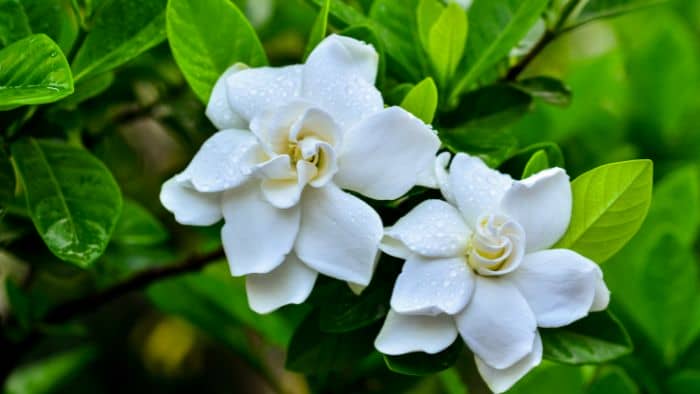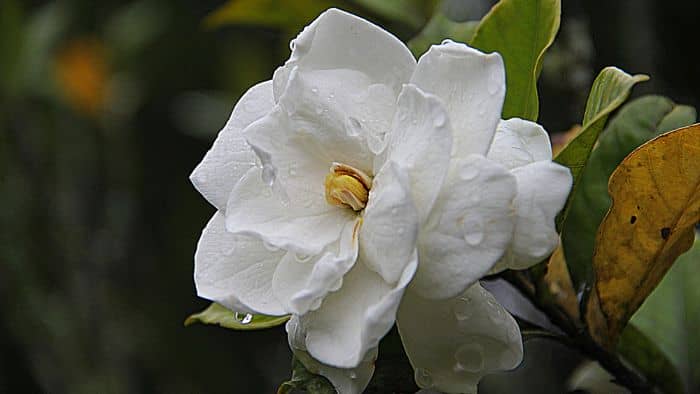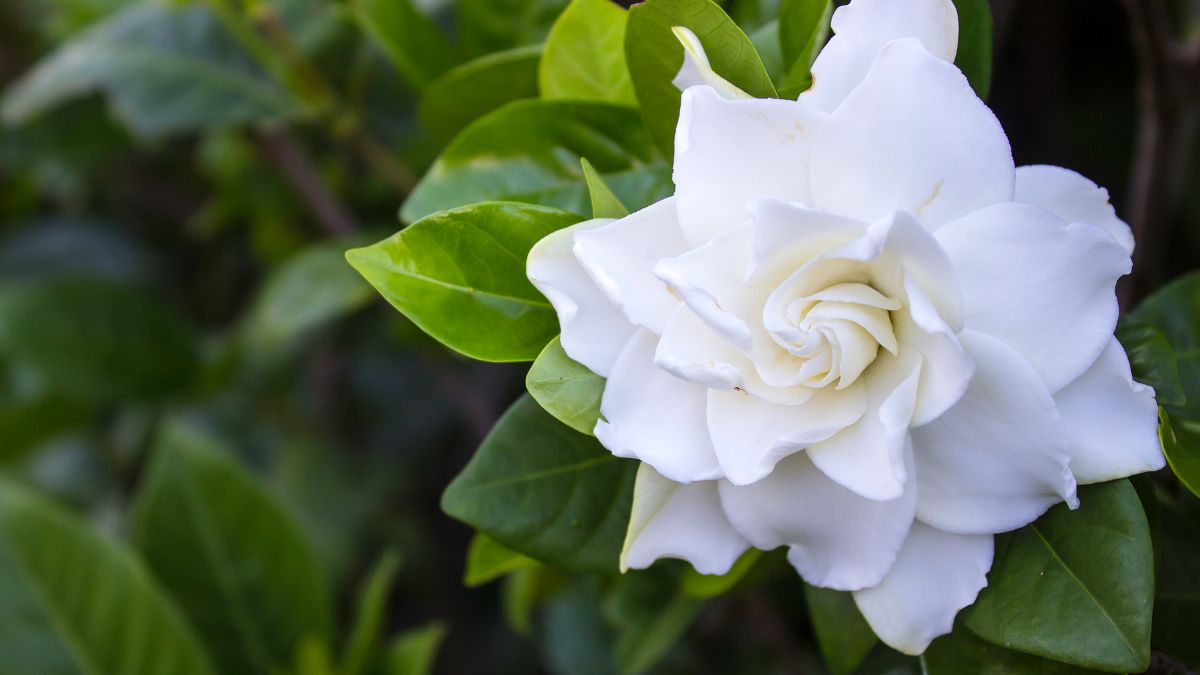This blog post has all the information you need on How to Make Soil Acidic for Gardenias. We offer the best gardening tips about gardenias, including how to plant them. Having nutrient-rich soil is one aspect of helping your plant thrive, but did you know that gardenias are amongst the plants that crave acidic soils?
Soil is the foundation that plants thrive and if it is not well suited to their needs, it can be detrimental to their health and growth. For gardenias to grow their best, amending the soil type that you have is essential. This is especially true if you are planting them in an area with alkaline soil as they don’t grow well in that type of environment.
Therefore, for your plant to be happy and healthy, it is important to know how to make soil acidic for gardenias. Also, knowing soil pH and how to test it will ensure that your plant is growing in the best environment. Have a look at the information and tips below and enjoy a thriving gardenia garden!
What To Consider Before Planting Gardenias?
Gardenias are an asset to any garden or landscape. Aside from their eye-catching evergreen foliage, they also lend a glorious fragrance to their surroundings. However, just as all plants have their demands when it comes to the environment they grow in, so do gardenias.
Therefore, it is important to consider a few things before planting them in your garden. Gardenias are native to Asia but grow well in many places around the world. They are amongst the most sought-after flowering plants that have gained popularity with both new and established gardeners.
The reason for this is that they usually adapt to most climates but have a lower tolerance for extremely dry and cold areas. They are hardy plants to grow but do best in soils with high acidity levels. Therefore, knowing how to make soil acidic for gardenias is essential to their health and growth.

How to Make Soil Acidic for Gardenias?
It is essential to learn how to make soil acidic for gardenias if a thriving garden is what you’re after. This will aid their growth by supplying them with essential nutrients. When it comes to soil pH, it is calculated on a scale of 1 to 14 with 7 being the neutral level. Soils below 7 are considered acidic while soils above 7 are alkaline.
Although most plants prefer neutral soils, gardenias are not one of them. Acid soils are essential in promoting healthy plant roots and growth when it comes to gardenias. There are also several ways to enhance acidity in the soil. Listed below are a few strategies that you can use.
Strategies to make the soil acidic:
1. You can add a good fertilizer that contains sulfur. This will increase soil acidity which is ideal for gardenias.
2. several soil amendments can be used to increase soil acidity.
3. You can add limestone, dolomite, or wood ash to make the soil acidic. This can be made with compost or kitchen waste.
4. Additionally, you can also use vinegar, horticultural sulfur, or lemon juice to enhance soil acidity for gardenias. They are just as effective as other methods.
Member’s Mark Distilled White Vinegar Jug, 1 Gal
How To Plant Gardenias in Pots?
Although gardenias grow as bushy shrubs, they are great for both indoor and outdoor planting. Aside from knowing how to make soil acidic for gardenias, growing them in pots needs a little extra care for them to thrive. These evergreen plants grow well in zone 8 to 10 in the US.
All they need is the right type of environment, water, good drainage, and sunlight to grow their best. Planting them in pots requires a little technique, so before you get started make sure that you have all the essentials. These include a plant pot (that is larger than the root ball) with a drainage bowl, soil, coffee grounds (for extra acidity), iron sulfate, water, some dead leaves (to retain the soil’s pH levels), and fertilizer.
Thereafter, you should crush the dead leaves and mix them into the soil. Then, fill half the pot up with soil and add a cup full of coffee grounds. After that, you can place your plant in the pot and add more soil until the pot is full. You can keep the pot indoors or outdoors but make sure that your plant gets sufficient sunlight.
You should monitor the topsoil and water your plant when it feels dry. Watch the next video to learn more about growing gardenias.
What Are The Advantages and Disadvantages Of Acidic Soil?
So, we have given you the information you need to make soil acidic for gardenias, but, what are the advantages and disadvantages of this type of soil? There are several advantages to using acidic soils in your garden. However, this would also depend on the type of plants you are growing.
While most plants thrive in neutral soil, some do best in alkaline or acidic soil. Listed below are a few pros and cons that you should take note of.
Pros:
• The more acidic a soil is the more humus it will contain which is excellent for certain plants.
• The soil has a high percentage of organic matter.
• Acid soils enhance plant growth and blooms.
• It is excellent for growing certain vegetables, ornamental plants, and grasses.
• There are several trace elements that are available to plants in acidic soils.
Cons:
• Depending on the type of plant you’re growing, acid soils can reduce the plant’s ability to absorb water.
• It can also interfere with a plant’s ability to absorb the fertilizer.
• Plant roots can also take a strain when accessing other essential nutrients from the soil.

Conclusion
Now that you know how to make the soil acidic for gardenias, you can confidently grow healthy plants. Seeing that these plants thrive on soils with a low pH, they should be regularly tested in order for them to reach their full potential. Keeping your gardenia plants happy will ensure that you have a lush garden with glossy evergreen shrubs and beautiful blooms.
It is also important to note that when repotting or transplanting gardenias, careful care should be taken. This is because these plants are sensitive and can be affected when replanting. Therefore, you should ensure that the root ball of the plant is still covered in soil when you rehome it.
Aside from that, these hardy plants are easy to grow as long as they have the right conditions. Remember that they thrive in organic soils with good water and aeration properties and need a good amount of sunlight daily! Click on the link for more information about this magnificent plant.
FAQs
[rank_math_rich_snippet id=”s-fb2fc301-3672-43f7-82a0-ac6b3cc8a914″]


